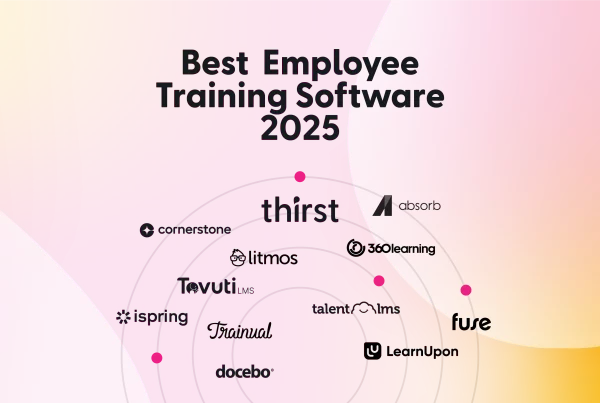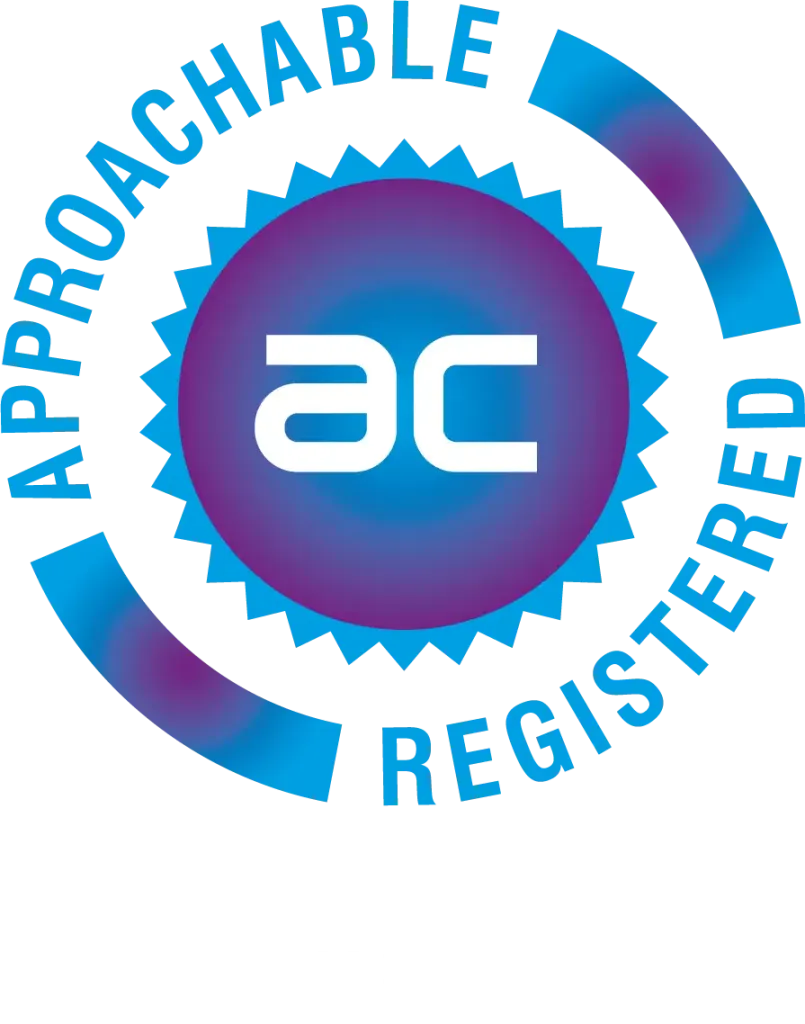In today’s rapidly changing world, the importance of lifelong learning cannot be overstated.
And as new technologies emerge, industries evolve, and societal norms shift, a well-developed lifelong learning culture can help your business stay competitive and innovative.
Here are just some of the benefits you can expect to see when you foster a culture of lifelong learning…
- Improved employee engagement. 🗣️
- Meaningful job satisfaction. 🙋♀️
- Improved employee retention rates. 📊
- A more skilled and adaptable workforce. 🛠️
At Thirst, we firmly believe that the workplace should encourage and nurture curiosity and a desire to learn.
But don’t just take our word for it…
Albert Einstein once said: “The important thing is not to stop questioning. Curiosity has its own reason for existing”. 💡
We’re guessing you’ve landed here because you’re curious about lifelong learning. 🤔
In this article, we’ll be taking a deep dive into the key ways to build a lifelong learning culture that drives the growth of your employees AND your business.
So let’s get into it!
What exactly is lifelong learning?
Lifelong learning is the ongoing process of acquiring knowledge, skills, and abilities.
It involves a proactive approach to learning and is a critical component of a thriving business.
Lifelong learning enables employees to adapt to changing circumstances, innovate, and contribute to the organisation’s success.
Such a culture is characterised by a commitment to ongoing learning and development at all levels of the organisation, with an emphasis on providing employees with the resources, tools, and opportunities they need to enhance their skills and knowledge.
We’ll talk about some examples of how to do this later on in the article, but for now, let’s discuss
Why lifelong learning is necessary for your company
Lifelong learning benefits both the organisation as a whole and employees as individuals.
Benefit 1: Lifelong learning helps employees stay up-to-date with the latest industry trends, technologies, and best practices, enabling them to perform their jobs more effectively and efficiently. This, in turn, can lead to increased productivity, improved quality of work, and better business outcomes. ⭐
Benefit 2: Lifelong learning can help companies attract and retain top talent by creating a culture that values employee development and growth.
When employees feel supported and encouraged to learn and develop new skills, they are more likely to be engaged and committed to their work and less likely to seek opportunities elsewhere. ⭐
Benefit 3: Lifelong learning can help companies stay competitive and innovative in an ever-changing business environment. ⭐
Now that you know the benefits, let’s take a look at some examples of lifelong learning
Lifelong learning can take many forms, depending on an individual’s interests, goals, and learning style.
Here are some of our favourite examples…
- Taking formal classes or courses, either in-person or online. 👨🏫
- Completing employer-provided training courses. 🗒️
- Attending conferences, workshops, or seminars. 📛
- Reading books, articles, or other material related to one’s profession or interests. 📚
- Seeking out mentorship or coaching from more knowledgeable and experienced individuals. 👩🏻🏫
- Self-directed learning through activities like research, experimentation, or reflection. 💭
- And let’s not forget informal learning opportunities, such as conversations with colleagues, networking events, or exposure to different cultures and perspectives. 🧠
So now that you know the benefits of lifelong learning and have read about fostering a lifelong learning environment, here’s how to bring it all together. 🚀
7 Ways to Build a Lifelong Learning Culture that Drives Employee Growth
1. Encourage learning in the flow of work 🧑💼
Why not look into integrating learning opportunities seamlessly into your employees’ daily work routines?
This approach can be more effective than traditional classroom-based training, allowing employees to apply new skills and knowledge in real-world situations and immediately see the benefits.
Here are some ways to encourage learning in the flow of work:
- Provide access to learning resources: Make sure employees have access to a range of resources, such as online courses, articles, videos, and podcasts, that can help them develop new skills and knowledge as and when needed.
- Encourage collaboration: Encourage employees to collaborate on projects and share their expertise and knowledge.
- Provide regular feedback: Regular feedback can help employees understand how they are progressing and what they need to do to improve. It can also help identify areas where additional learning or development may be required.
- Make learning part of the job: Incorporate learning opportunities into job descriptions and performance expectations, and reward employees for developing new skills or knowledge.
- Use technology: Use technology to support learning in the flow of work, such as through gamification, simulations, or a skills and learning platform.
2. Build a culture of continuous learning 🔁
Building a culture of continuous learning requires a deliberate and sustained effort from your organisation’s leadership.
Here are some ways to create a culture of constant learning:
- Lead by example: Senior leaders must model the behaviour they want to see in their employees by making continuous learning a priority in their own work.
- Encourage experimentation: Create an environment where employees feel comfortable taking risks and trying new things, and encourage experimentation to learn and grow.
- Provide learning opportunities: Provide employees with access to a range of learning opportunities, such as conferences, training programs, and online courses, that are aligned with the organisation’s goals and values.
- Foster a growth mindset: Encourage employees to develop a growth mindset where they view challenges and failures as opportunities to learn and improve.
- Recognise and reward learning: Recognise and reward employees for their learning achievements, such as completing a course, acquiring a new skill, or sharing their knowledge with others.
- Create a learning community: Encourage collaboration and knowledge sharing and create opportunities for employees to share their knowledge and expertise.
3. Create Personalised Learning Experiences 🤝
Creating personalised learning experiences involves tailoring the learning process to meet each learner’s unique needs, interests, and goals.
Here are some steps to create personalised learning experiences:
- Assess learners’ needs: Use tools such as self-assessments, performance evaluations, and feedback to understand learners’ strengths, weaknesses, and areas for improvement.
- Identify learning objectives: Develop clear learning objectives that are specific, measurable, achievable, relevant, and time-bound (SMART) for each learner.
- Design personalised learning plans: Based on the assessment results and learning objectives, develop personalised learning plans that include relevant learning activities, resources, and assessments.
- Use adaptive learning technology: Use adaptive learning technology that uses data analytics and machine learning to personalise the learning experience based on learners’ progress, interests, and learning style.
4. Make tacit knowledge sharing the norm 🗣️
Sharing tacit knowledge can be challenging, as it relies on personal relationships, trust, and informal networks. It is, however, not impossible!
Here are some ways to make tacit knowledge-sharing the norm:
Recognise the value of tacit knowledge: Help employees understand the importance of tacit knowledge and how it can contribute to the organisation’s success. Encourage them to share their knowledge with others and recognise those who do so.
Use internal social networking tools: Use internal social media platforms or CRMs to facilitate informal knowledge sharing and help employees connect with one another.
Provide training and support: Provide training and support to help employees develop their communication and interpersonal skills and to create a culture that supports tacit knowledge sharing.
Create opportunities for knowledge sharing: Provide employees with opportunities to share their tacit knowledge, such as through mentoring, coaching, or peer-to-peer learning.
5. Offer reskilling and upskilling opportunities 🆙
Offering reskilling and upskilling opportunities to employees is crucial for staying competitive in today’s fast-paced job market.
Here are some ways to provide reskilling and upskilling opportunities:
- Conduct skills assessments: Conduct skills assessments to identify skills gaps and determine the skills and knowledge employees need to acquire to stay relevant in their roles.
- Provide learning and development opportunities: Offer various learning and development opportunities such as workshops, online courses, on-the-job training, coaching and mentoring, and job shadowing.
- Offer career development opportunities: Provide career development opportunities such as job rotations, secondments, and stretch assignments that enable employees to develop new skills and gain diverse experiences.
- Offer financial support: Offer financial aid such as tuition reimbursement, scholarships, and education loans to help employees pay for their education and training.
- Provide flexibility: Offer learning and development opportunities to accommodate employees’ schedules, preferences, and learning styles.
6. Develop learning journeys that encourage employees to move closer to their career goals 🥅
Developing learning journeys that align with employees’ career goals can help increase their engagement and motivation and drive their professional development.
Here are some steps to develop learning journeys that move employees closer to their career goals:
- Conduct career conversations: Conduct regular conversations with employees to understand their career aspirations, interests, and goals. Use this information to develop learning journeys that align with their career goals.
- Identify career pathways: Identify career pathways within the organisation and develop learning journeys that support employees in progressing along these pathways.
- Define learning objectives: Define clear learning objectives that align with employees’ career goals and the organisation’s strategic objectives.
- Provide feedback and recognition: Regularly feedback on employees’ progress, and recognise and reward employees who progress towards their career goals.
7. Choose the right learning platform 💻
Choosing the right learning platform to support your lifelong learning incentives is imperative.
You can use a learning platform such as Thirst to help your employees take ownership of their personal development and seek opportunities to enhance their skills, knowledge, and competencies.
Let’s take a deeper look…
Content: Your learning platform should offer various content that aligns with the learners’ needs and interests. Our platform provides access to diverse and engaging content, including videos, interactive modules, simulations, and case studies.
Accessibility: Your learning platform should be accessible from various devices and locations to support learners on the go or working remotely. It should also be easy to navigate and provide learners with personalised recommendations based on their interests and learning history.
Collaboration: A great learning platform (like Thirst!) should facilitate collaboration and knowledge-sharing among learners and experts in the field.
Tracking and assessment: Your learning platform should offer tools to track learners’ progress and provide feedback on their performance. This could include assessments, quizzes, and progress reports.
Customisation: The platform should allow learners to customise their learning experience to suit their learning styles and preferences. This could include the ability to choose the order of content, adjust the pace of learning, and customise their learning goals.
Thirst has you covered on all this AND more.
If this sounds like what you’re looking for.
Thirst’s AI-enabled learning hub is the perfect place to start.
Employees can learn faster and smarter, all thanks to the ability to easily access knowledge through insights, resources and company-wide expertise.
Moreover, Thirst can help you pinpoint knowledge gaps across individuals and teams, making your team more considered and accurate in their output.
But don’t just take our word for it!
Over 100 L&D teams trust Thirst to support knowledge sharing within their organisation. Check out their stories here.
Want to try it for yourself?
Get a free 1:1 demo of the Thirst platform now. Try Thirst today to enjoy game-changing learning and unlimited possibilities.
For more e-learning insights, resources and information, discover the Thirst blog.
You may also enjoy:
What is personalised learning, and how can it take your L&D to the next level? | 7 Ways to Identify Knowledge & Skills Gaps in Your Workforce | Why knowledge sharing is so important for your learning culture







